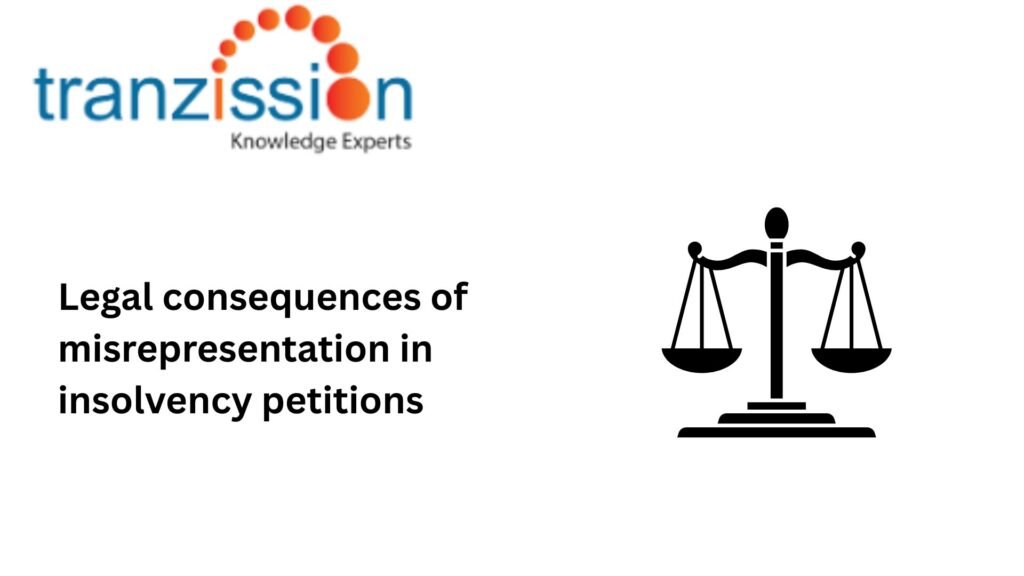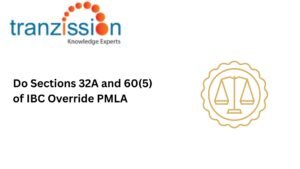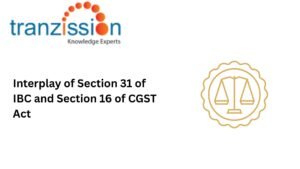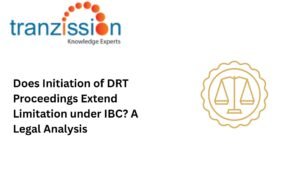
Legal consequences of misrepresentation in insolvency petitions

Table of Contents
Misrepresentation in insolvency petitions involves making false or misleading statements about the debtor’s financial information, debt obligations, or other relevant facts:
Misstatement of Debt or Default:
A party who intentionally omits or misrepresents information, particularly if it’s relevant to the case, can be deemed to have acted with unclean hands and is not entitled to equitable relief or justice from the court. The court can dismiss the petition if the omitted or misrepresented facts have a bearing on the court’s decision-making, such as falsifying loan agreements, inflating dues, or fabricating default timelines.
Concealment of Material Facts:
Concealment of material facts to intentionally hiding or withholding information that is important and relevant to the case, with the intent to mislead the court or gain an unfair advantage. This may include hiding ongoing litigations, undisclosed transactions, or asset transfers.
Read more : Liquidation of Non-Profit Organizations
Forgery or Tampering with Documents:
An Misrepresentation in insolvency petitions is based on forged or tampered documents, like forged invoices, bank records, or non-existent board resolutions, the court may refuse to accept or act on the petition. They are used to support the initiation of the insolvency process or to mislead stakeholders, which leads the National Company Law Tribunal (NCLT) to either reject the application or take other corrective measures.
Collusive Petitions Between Corporate Debtor and Creditor:
Filing petitions with intent to misuse CIRP for non-genuine restructuring or escape from legal liabilities. This goes against the IBC’s goal to help companies in financial distress resolve their debts and potentially revive their operations.
Applicable Legal Provisions Under the IBC and Allied Laws
The IBC provisions that deal with the genuineness of Misrepresentation in insolvency petitions are:
Section 65 – Fraudulent or Malicious Initiation of Proceedings:
Section 65 of the National Company Law Tribunal (NCLT) to impose upon such person a penalty which shall not be less than one lakh rupees, but may extend to one crore rupees
Section 72 – Punishment for False Information in Application:
This provision addresses the punishment for wilful and material omissions in statements relating to the affairs of the corporate debtor. An officer of the corporate debtor who makes such an omission can be punished with imprisonment for a term between three and five years, a fine between one lakh rupees and one crore rupees, or both
Section 75 – Furnishing False Information in Creditors’ Application:
Section 75 deals with the punishment for providing false information in an application made under section 7 of the IBC. Specifically if a person knowingly furnishes false information or omits a material fact in an application related to the initiation of the corporate insolvency resolution process (CIRP), they can be fined. The fine can be a minimum of one lakh rupees and may extend to one crore rupees.
Read more : Liquidation of Non-Profit Organizations
Section 76 – Punishment for Non-Disclosure of Disqualifications:
The section targets operational creditors who knowingly hide the fact that the corporate debtor has notified them of a dispute regarding the unpaid debt or has already paid the debt in full. It penalizes operational creditors who intentionally conceal information about a dispute or full payment of a debt that the corporate debtor has notified them of. Such individuals are punishable with imprisonment for a term which shall not be less than one year but may extend to five years or with fine which shall not be less than one lakh rupees but may extend to one crore rupees, or with both.
Judicial Perspective on Misrepresentation
In Sunil Kewalramani v. Kestrel Import & Export, the NCLT held that that where a Petition if filed collusively and not with the purpose of achieving resolution, then despite fulfilling all the conditions of the Code, it can exercise its discretion in rejecting the Application by relying upon Section 65 of the Code, to avoid and protect the company from being dragged into CIRP in a mala fide manner. It has also been held that initiating CIRP against a company only with an intention to recover dues, is against the very spirit and purpose of the IBC. In M/s Shobha Ltd v. Pancard Clubs, the application was dismissed by the NLCT. The dismissal was based on the fact that Pancard Clubs had a pre-existing dispute with Shobha Ltd. that was undergoing arbitration, and this fact was not fully disclosed by Shobha Ltd. in their application. This suppression of material information regarding the ongoing arbitration led to the rejection of the application under section 9 of the IBC
Role of Adjudicating Authorities and RPs
Powers of NCLT/NCLAT:
The NCLT or NLCAT is responsible for deciding whether an insolvency application is valid and for making sure the IBC provisions are followed. They supervise the entire process and ensure that the interests of all parties involved are protected. Essentially, they have the authority to reject petitions with suppression or misrepresentation and power to refer cases for prosecution or penal action under Sections 65–77.
Duties of Resolution Professionals:
RPs is responsible for conducting the insolvency process. Their key duties include preservation of assets and managing the company as a going concern. It also necessitates that the RPs report fraud, irregularities, or false statements. Section 208 of the IBC lists the functions and obligations of RPs, and it mandates that they adhere to the Insolvency and Bankruptcy Board’s (IBBI) Code of Conduct. This code of code is detailed in the IBBI (Insolvency Professionals) Regulations, 2016 emphasizes principles like integrity, independence, impartiality, and professional competence.
Consequences for Different Stakeholders
When the transparency or fairness of the IBC is not upheld, there are consequences for all stakeholders, specifically:
For Corporate Debtors:
If the NCLT finds that the CIRP was initiated based on false or misleading information, they may order the revocation of the misrepresentation in insolvency petitions, effectively stopping the process altogether. The IBC, in sections 65, 75, and 76, the corporate debtor may face monetary or criminal liability. Further, the debtor may also face reputational damage and potential investigation by the SFIO, Enforcement Directorate, or the Income Tax Department.
For Creditors:
Sections 75 and 76 of the IBC impose penalties for false claims and related offenses, with the potential for imprisonment, fines, or both. Providing false information or failing to disclose material facts can also lead to a loss of credibility and have long-term negative consequences in ongoing and future insolvency proceedings.
For Insolvency Professionals:
The IBBI issues directives and regulations regarding the treatment of insolvency professionals who engage in misrepresentation or make false statements in misrepresentation in insolvency petitions. The IBBI can suspend the registration of insolvency professionals, impose penalties, or disqualify them for professional misconduct, or collusion, leading to legal liability.
Safeguards and Preventive Measures
Due Diligence Before Filing:
RPs have the duty to verify financial records, cross-check claims, and legally vet petitions, which are crucial steps for ensuring fairness and accuracy of the resolution process. These processes help determine the true financial position of the debtor and the validity of the petition, creditors’ claims.
Use of Information Utilities (IUs):
IUs serve as repositories of financial information about debtors. They are designed to ensure the timely and accurate flow of information, facilitating the resolution of misrepresentation in insolvency petitions cases. If petitions contain misrepresented information, it can undermine the accuracy of information relied upon by IUs. This can lead to delays, disputes, and even failure of the resolution process.
Conclusion
Misrepresentation in insolvency petitions can lead to severe legal consequences under the IBC and undermines its integrity. The IBC includes provisions for both criminal and financial consequences for fraudulent or abusive practices. For instance, section 66 of addresses “fraudulent and wrongful trading”, allowing authorities to take action against those knowingly engaged in business with the intent to defraud creditors or for other fraudulent purposes.





